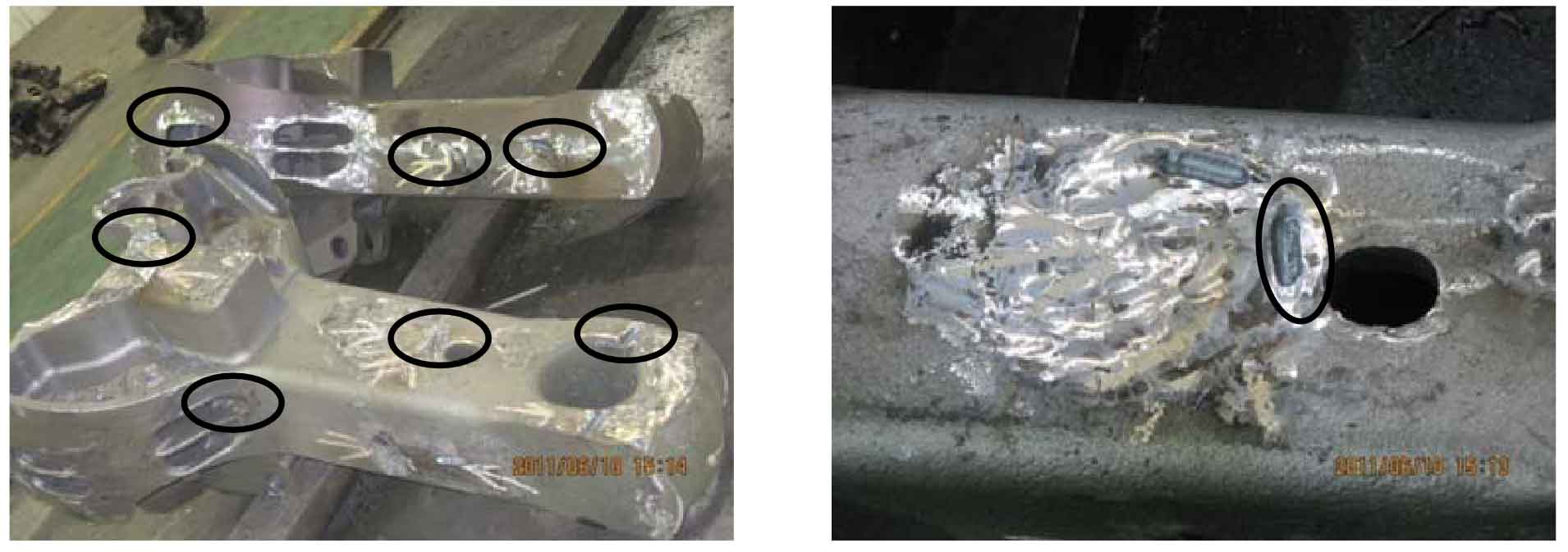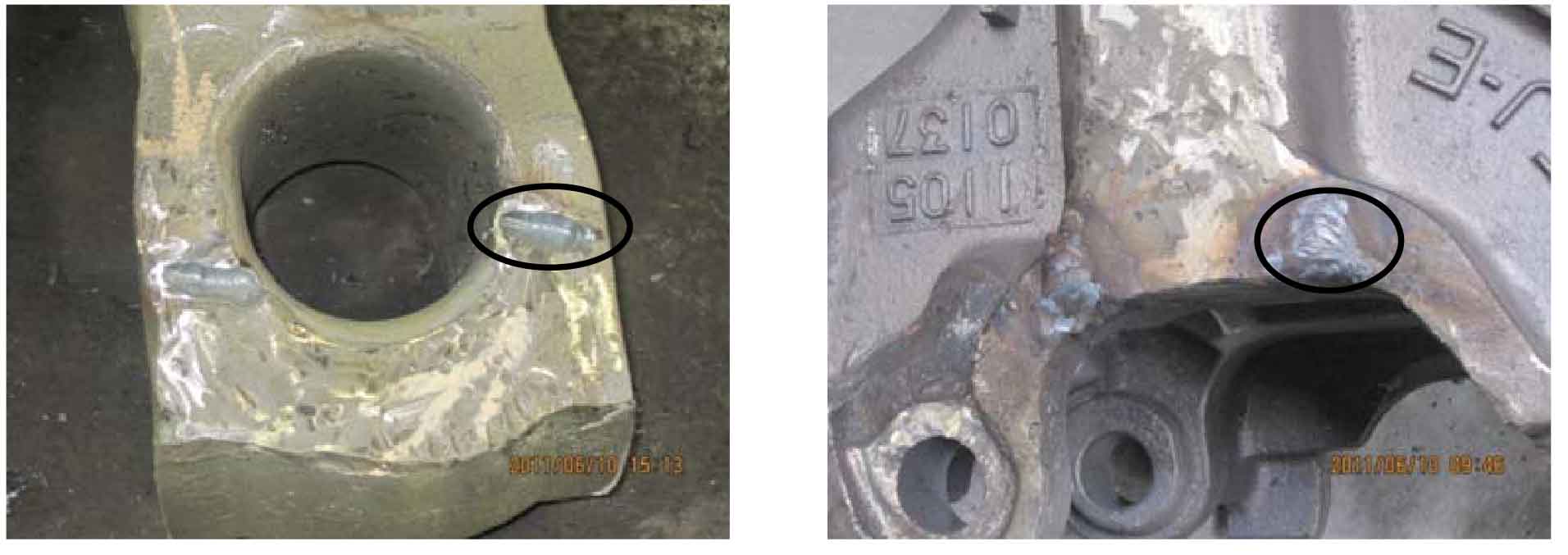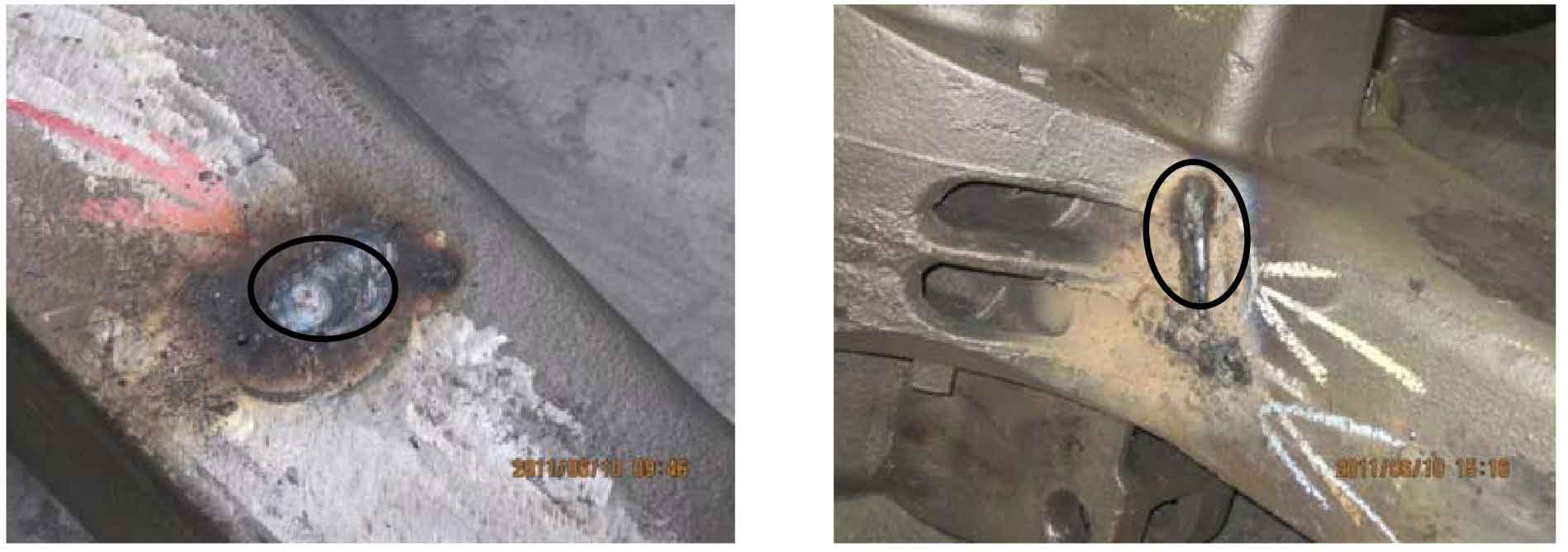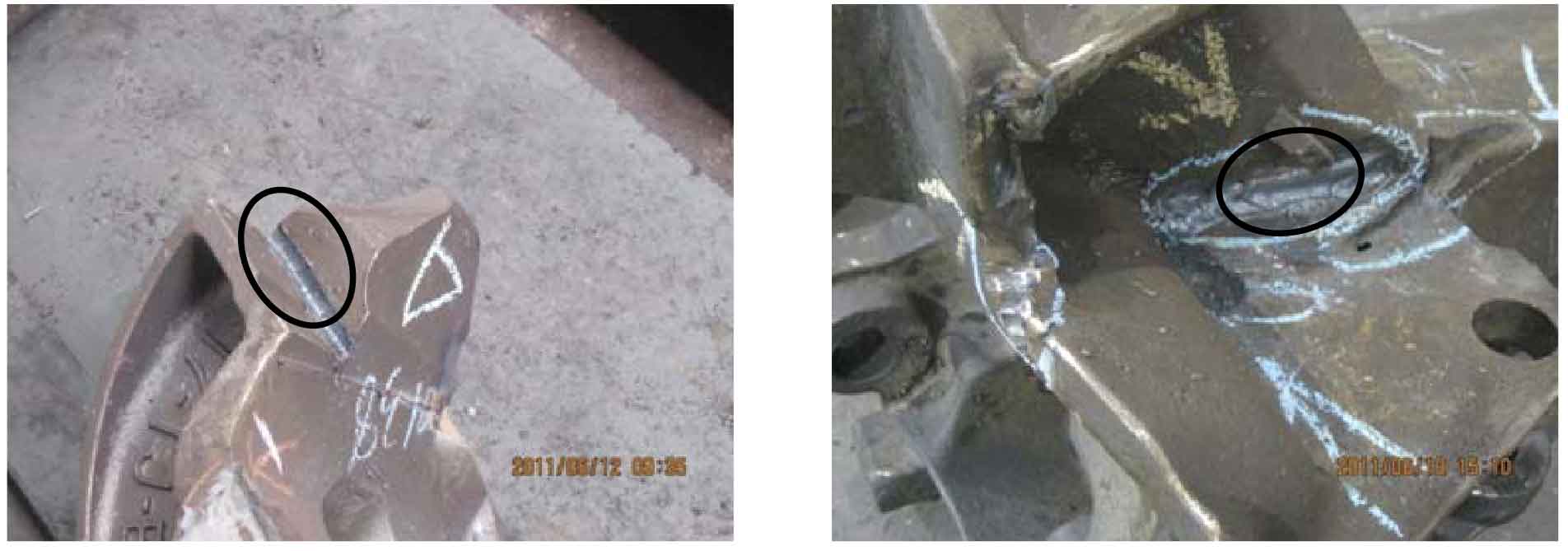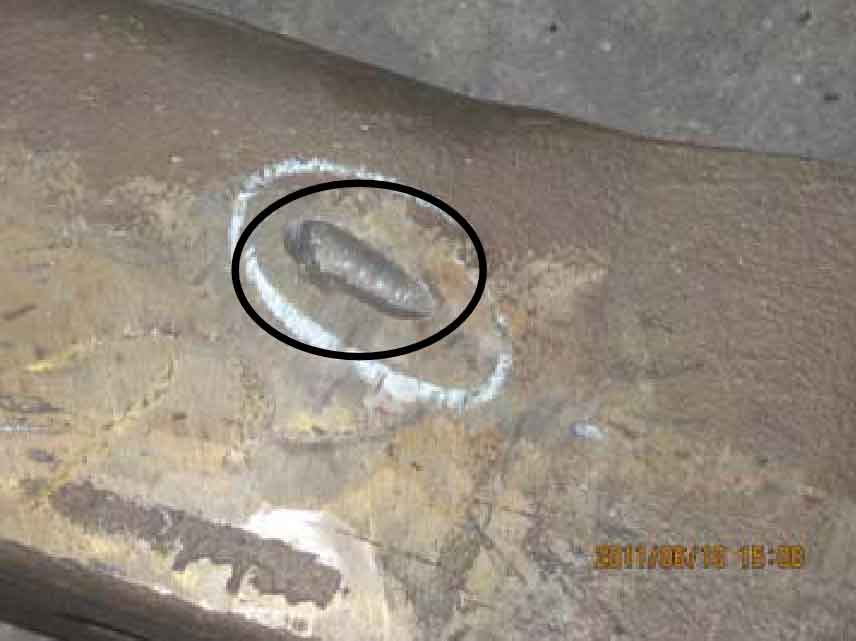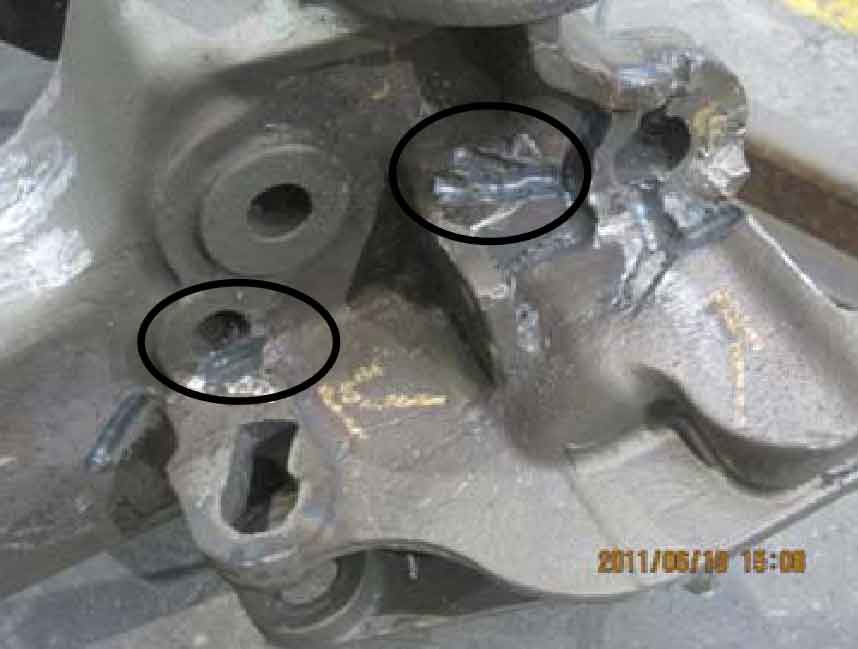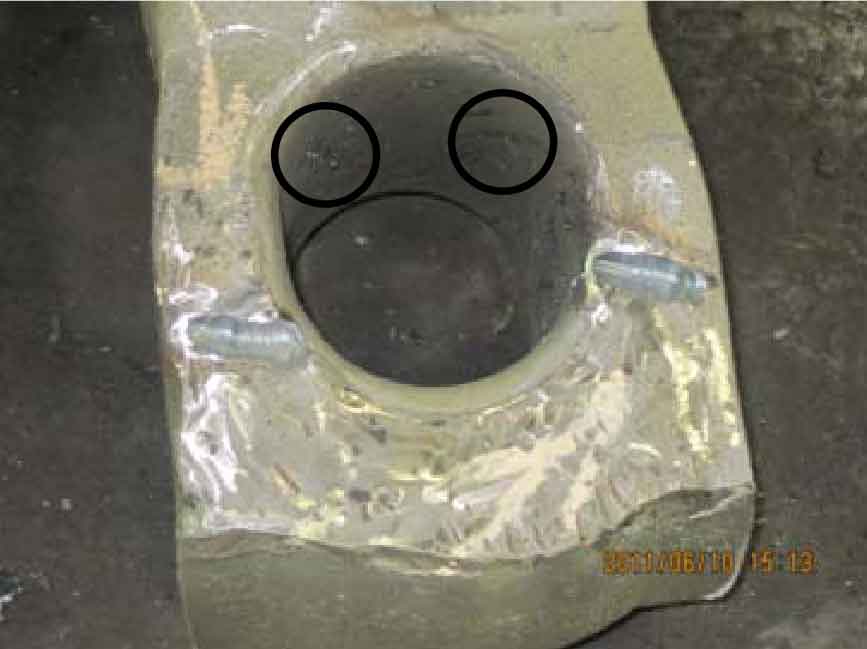The main casting defects of coupler body include crack, air hole, sand inclusion and mechanical sand sticking. The main parts of the crack include the root of the pouring and riser, the hook shoulder, the corner of the complex curved surface of the hook head and so on. Figure 1 shows the test production parts after flaw detection and crack welding repair. According to the morphological identification of the crack, the hook body crack is mainly a thermal crack, that is, the crack extends along the grain boundary, the shape is tortuous and irregular, the depth is different, the surface is black brown iron oxide and not smooth, and the crack (f) (g) (H) in Figure 1 should be a thermal crack. Cold crack, whose shape is continuous straight line or smooth curve, often passes through grains, and the fracture has metallic luster or slight oxidation color. It mainly appears at the root of pouring and riser or welding position.
The air hole defect of the hook body mainly occurs on the surface around the large plane riser of the hook body and under the skin. After heat treatment and processing, it can be found that the surface is relatively smooth and pear shaped, and the thin neck direction is the direction of gas source. Porosity defects are often treated by welding repair, which increases the cleaning workload. As shown in Figure 2, preparation for welding repair after removing porosity defects. Sand inclusion, that is, a small part of metal protrusion on on the surface of the defective part is connected with the body, and there is a sand layer between the protrusion and the casting. After removing the sand layer, normal metal can be seen. The sand inclusion of the hook body mainly exists in the corner of the complex curved surface at the upper part of the hook head. The treatment method of sand inclusion defect is to remove it first and then repair it by welding. The sand inclusion defect increases the cleaning workload. Fig. 3 shows the situation that the more serious part of the hook body with sand inclusion is removed and ready for welding repair. Mechanical sand sticking mainly occurs at the inner side of the coupler tail pin hole. The surface of the sand core at the sensitive part of the pin hole forms a metal sand mixed adhesive layer under the strong thermal action of liquid steel. The surface is spongy. After cleaning, pits appear and have metallic luster. Sand sticking defects will greatly increase the cleaning workload. Figure 4 shows the situation after mechanical sand sticking cleaning, and the surface is rough.

